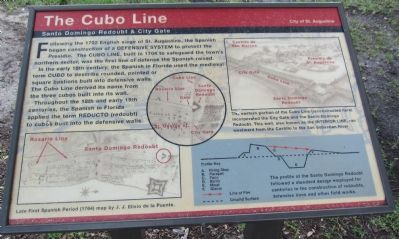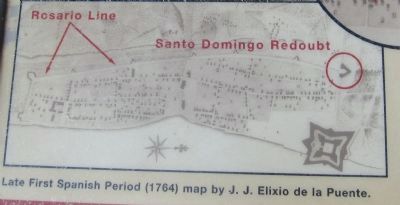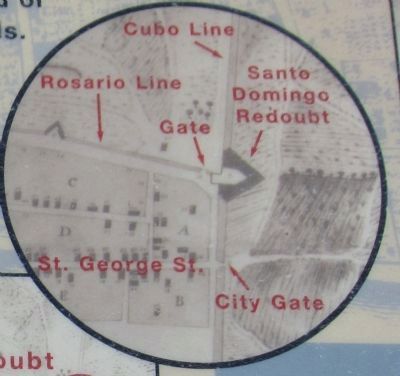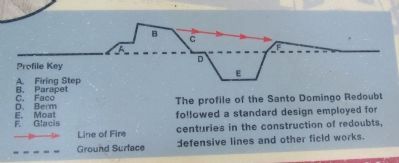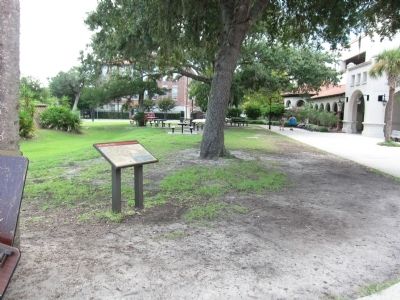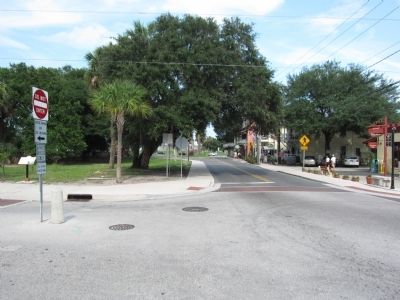St. Augustine in St. Johns County, Florida — The American South (South Atlantic)
The Cubo Line
Santo Domingo Redoubt & City Gate
In the early 18th century, the Spanish in Florida used the medieval term Cubo to describe rounded, pointed or square bastions built into defensive walls. The Cubo Line derived its name from three cubos built into its wall.
Throughout the 18th and early 19th centuries, the Spanish in Florida applied the term reducto (redoubt) to cubos built into the defensive walls.
Erected by City of St. Augustine.
Topics. This historical marker is listed in these topic lists: Colonial Era • Forts and Castles. A significant historical year for this entry is 1702.
Location. 29° 53.881′ N, 81° 18.893′ W. Marker is in St. Augustine, Florida, in St. Johns County. Marker is at the intersection of Cordova Street and Orange Street, on the right when traveling south on Cordova Street. Located in front of the Santo Domingo Redoubt reconstruction. Touch for map. Marker is in this post office area: Saint Augustine FL 32084, United States of America. Touch for directions.
Other nearby markers. At least 8 other markers are within walking distance of this marker. The Lynching of Isaac Barrett / Racial Violence in America (a few steps from this marker); The Lynching of Isaac Barrett (a few steps from this marker); Santo Domingo Redoubt (a few steps from this marker); a different marker also named Santo Domingo Redoubt (within shouting distance of this marker); Los Floridanos (within shouting distance of this marker); a different marker also named Santo Domingo Redoubt (within shouting distance of this marker); a different marker also named Santo Domingo Redoubt (within shouting distance of this marker); The 1886 Old Drugstore (within shouting distance of this marker). Touch for a list and map of all markers in St. Augustine.
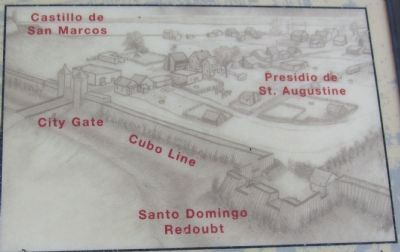
Photographed By Craig Swain, August 1, 2011
4. Depiction of the Eastern Portion of the Cubo Line
The eastern portion of the Cubo Line (reconstructed here) incorporated the City Gate and the Santo Domingo Redoubt. This wall, also known as the interior line, ran westward from the Castillo to the San Sebastian River.
Credits. This page was last revised on January 2, 2019. It was originally submitted on August 29, 2011, by Craig Swain of Leesburg, Virginia. This page has been viewed 1,225 times since then and 51 times this year. Photos: 1, 2, 3, 4, 5, 6, 7. submitted on August 29, 2011, by Craig Swain of Leesburg, Virginia.
